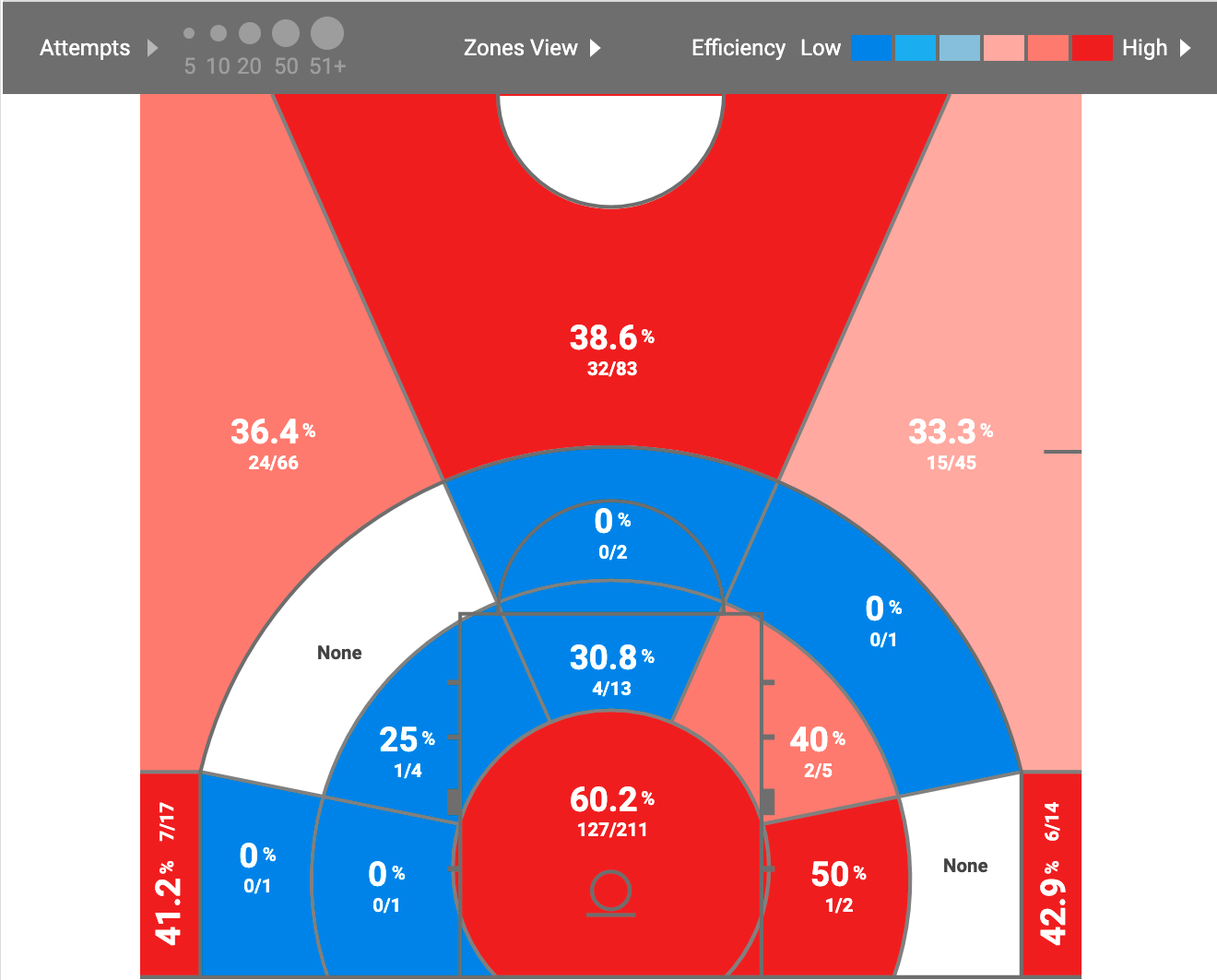Name: Devin Carter
Birth date: March 18, 2002
Height/Weight: 6’2 ¼/193
Wingspan/ standing reach: 6’8 ¾/8’2
Hand size: 9
Position: Guard
Pre-Draft team: Providence
Tools: Defense, P&R creation
Background: Son of former NBA guard Anthony Carter. Transferred from South Carolina and had back to back years of great growth at Providence. He was named Big East Player of the Year in 2024.
Season stats: 19.7 PPG 8.7 RPG 3.6 APG 1.8 SPG 1 BPG 2.7 TOPG on 47/38/75
Pros:
Outstanding defender that creates negative plays for the offense
Comfortable drawing fouls by absorbing contact after getting defenders out of position
Outstanding rebounder, arguably the best guard rebounder in the draft
Plays hard, which allows him to win more plays on loose balls and defense
Creative ball-handler off of screens
Quick burst and ability to change speeds and win on drives
Absorbs contact well on defense; can take bumps to the chest and be able to push back, while also staying in front of pro moves
It is impossible to get away with a lazy pass near him; elite ball-denier
He extends plays for the worse for opposing offenses by reading plays before they happen and shutting down set plays
Long arms helps him defensively and to finish around bigs at the rim
Has good post footwork, giving him upside to be creative near the rim
Soft touch at the rim helps him finish over bigs and makes him efficient at the rim
Cons:
Jump shot is a bit of a push shot that has a low starting point, making him susceptible to blocks. Also has weird hand placement that doesn’t create consistent releases
Base is inconsistent and overall shaky
Heavily prefers going right, sometimes forcing the issue
Can force bad jumpers up too often (vs UConn)
Swing Skills:
How real is the jump shot? Comes down to work ethic
Summary:
Devin Carter has grown over the last year as an offensive player, while maintaining elite defensive prowess. He grew on offense by becoming a better shooter and getting to the line more, as well as being more comfortable using screens.
One of the ways Carter is skilled at drawing fouls is by making the defenders bite on all of his actions. For example, the fake off the turnaround, albeit bad defense, gets his man in the air and Carter quickly recognizes the opportunity he has to bail out the possession with free throws. His ability to recognize foul-drawing opportunities will translate well to the NBA, as that is a trait every guard needs to have to survive in the NBA.
If the jumper grows, which needs tweaking but has grown enough in one season to believe that the shot can be here to stay, he has a strong offensive median outcome. With a moonball that has mechanical issues as a push shot that should only unlock more touch once revised, he also doesn’t keep a sturdy base. Sometimes he keeps a narrow base, others a wide base, and most times his legs don’t keep the rest of the body aligned. On moving jumpers, it feels like he is guessing on how to aim his shot, which can lead to bad misses. Even with these concerns, if his work ethic is strong, these woes are growing pains as opposed to flaws.
Defensively, there is not a matchup Carter shies away from. His motor, competitive nature and intensity, and length make him a versatile defender that can guard up and have his defense scale up to the NBA. This will be what sets him over the top in the NBA, being able to defend the opposing team’s best player in the playoffs, and this shouldn’t take a long time to translate. With great physicality and good defensive technique, Carter can lock up guards and defend some smaller 3s due to length and ability to control the possession. Carter loves playing bigger than his size, which resembles a key trait the perennial All-Defense caliber guards possess.
Beyond on-ball defense, Carter’s anticipation for both passing lanes and shots are outstanding, which made him one of only two (the other being Reed Sheppard) draft prospects under 6’4 with a 2.5+ steal % and 2.5 BLK%. The other players to do this in the past consists of some of the top defenders in the league: Gary Payton Jr, De’Anthony Melton, Josh Okogie, and Miles McBride. Carter’s ability to chase ball-handlers and never be out of the play is another trait that helps him defend off of screens, along with good screen navigation. With both on-ball and off-ball prowess, Carter profiles well to be a perennial All-Defense candidate that can play 25+ minutes in a playoff game down the road.
While Carter can be right hand dominant, Carter should grow as a playmaker in the NBA, and combined with shooting growth, his offense should translate to the NBA. With an advanced ability to play off of screens, as he gets a roller with NBA athleticism and gravity, he should be able to be a successful two-way guard in terms of making his teammates better. With All-Defense upside, a workable shot, a great frame, and playmaking ability, Carter has one of the easiest paths in the draft to returning top 10 value.
Projected draft range: 8-15
Expected role: Two-way point guard that plays elite defense while getting to the line.
Unplayable if: Jumper was a one-off this year and the shot never fully translates/never gets above league average.
Exceeds expectations if: Jumper continues to develop, and his PG skills


